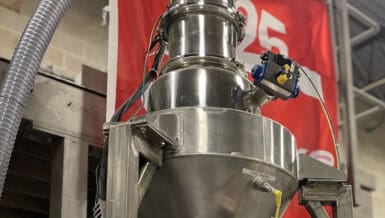Its significance stretches across a vast array of applications, from the precision required in pharmaceutical formulations to the durability needed in construction materials. Viscosity is not just a technical concern but a pivotal factor that shapes the efficiency and quality of numerous manufacturing and processing industries. The ability to comprehend and manipulate viscosity allows process engineers to optimize the flow dynamics essential for achieving desired outcomes, underscoring the importance of this property in the industrial realm.
From Natural Phenomena to Industrial Applications
The influence of viscosity is omnipresent, manifesting in natural processes such as the circulation of blood and the flow of lava, as well as in everyday products like honey. This wide-ranging impact is particularly pronounced in the domain of powder processing, where viscosity governs the behavior of materials in critical industries including pharmaceuticals, food production, and materials engineering. In these fields, the mastery over viscosity is not merely advantageous—it is crucial. For pharmaceutical companies, it ensures the consistent mix and dispersion of ingredients, vital for patient safety and product efficacy. In the realm of construction, the manipulation of viscosity affects the workability of materials like cement, directly influencing the structural integrity and longevity of the built environment.
The Intricacies of Viscosity in Fluid-Powder Systems
Delving deeper into the interaction between shear stresses and viscosity unveils the complexities inherent in optimizing industrial processes. The balance between these forces is essential for the homogeneity and efficiency of operations, especially in fluid-powder systems. In the pharmaceutical industry, for instance, the precise adjustment of shear stress and viscosity is crucial for achieving uniform formulations, a prerequisite for the consistent therapeutic efficacy of medications. Similarly, in the construction sector, the control over these parameters ensures that materials like concrete possess the ideal consistency for application, setting, and durability. The challenge of accurately measuring viscosity, therefore, becomes paramount, with techniques such as capillary and rotational viscometry providing the necessary insights into material characteristics and behavior under different conditions.
Navigating the Complexities of Non-Newtonian Fluids
The exploration of viscosity becomes even more complex with the introduction of non-Newtonian fluids, whose viscosity changes under varying shear stresses, adding a layer of complexity to powder processing. Engineers face the task of understanding these dynamic interactions to optimize the manufacturing and handling processes. This understanding is critical not only for maintaining process efficiency but also for ensuring the quality and consistency of the end product, be it in pharmaceuticals, food production, or construction materials.
Optimizing Manufacturing Processes Through Viscosity Control
The journey through the landscape of viscosity underscores its critical role across a broad spectrum of industries. Process engineers leverage their expertise in viscosity to fine-tune manufacturing processes, selecting optimal viscosities based on material characteristics and aligning them with the capabilities of processing equipment. This meticulous orchestration of factors is evident in the design and operation of pneumatic systems, where the precise control of air flow and pressure is essential for efficient and reliable performance. The role of viscosity extends beyond the mechanical, influencing the texture and sensory attributes of food products, the drying and curing properties of paints and coatings, and the reaction kinetics in chemical manufacturing.
In conclusion, the exploration of viscosity within the realm of powder technology reveals a complex interplay of scientific principles and industrial applications. By navigating the nuances of shear stresses and viscosity dynamics, process engineers unlock the potential for enhanced efficiency, quality, and innovation in their respective fields. The journey through viscosity’s domain is not merely a technical endeavor but a testament to the ingenuity and adaptability of those who seek to understand and harness its power for the advancement of technology and industry.










































